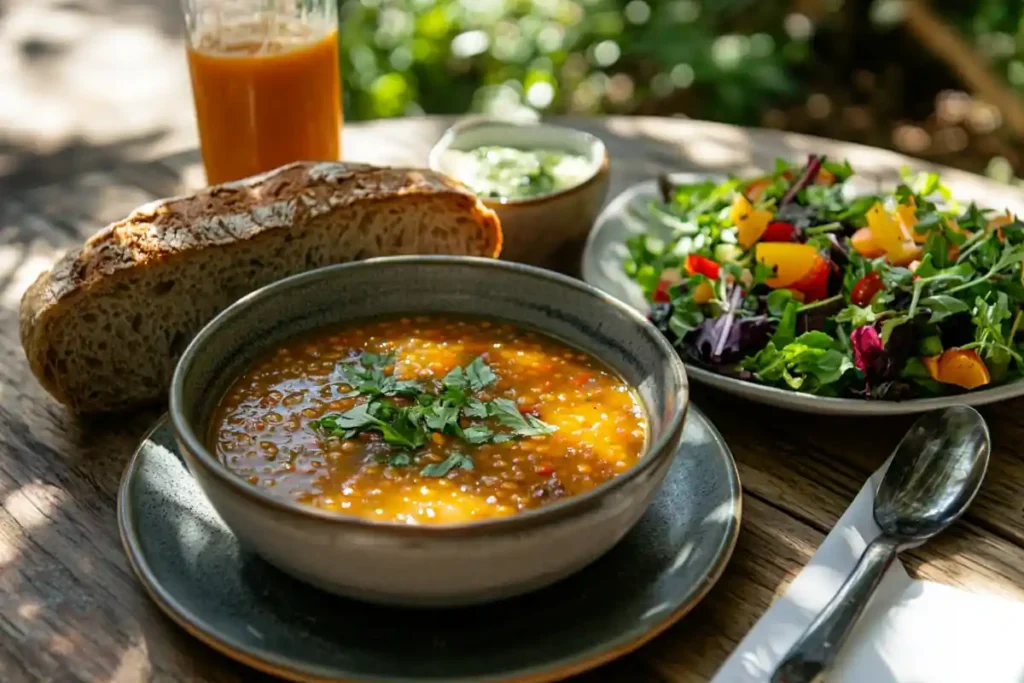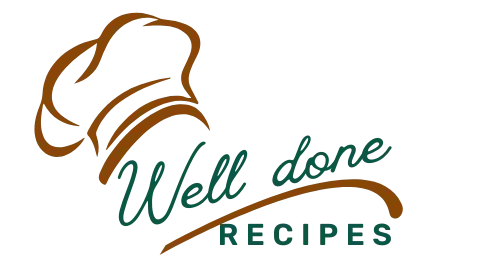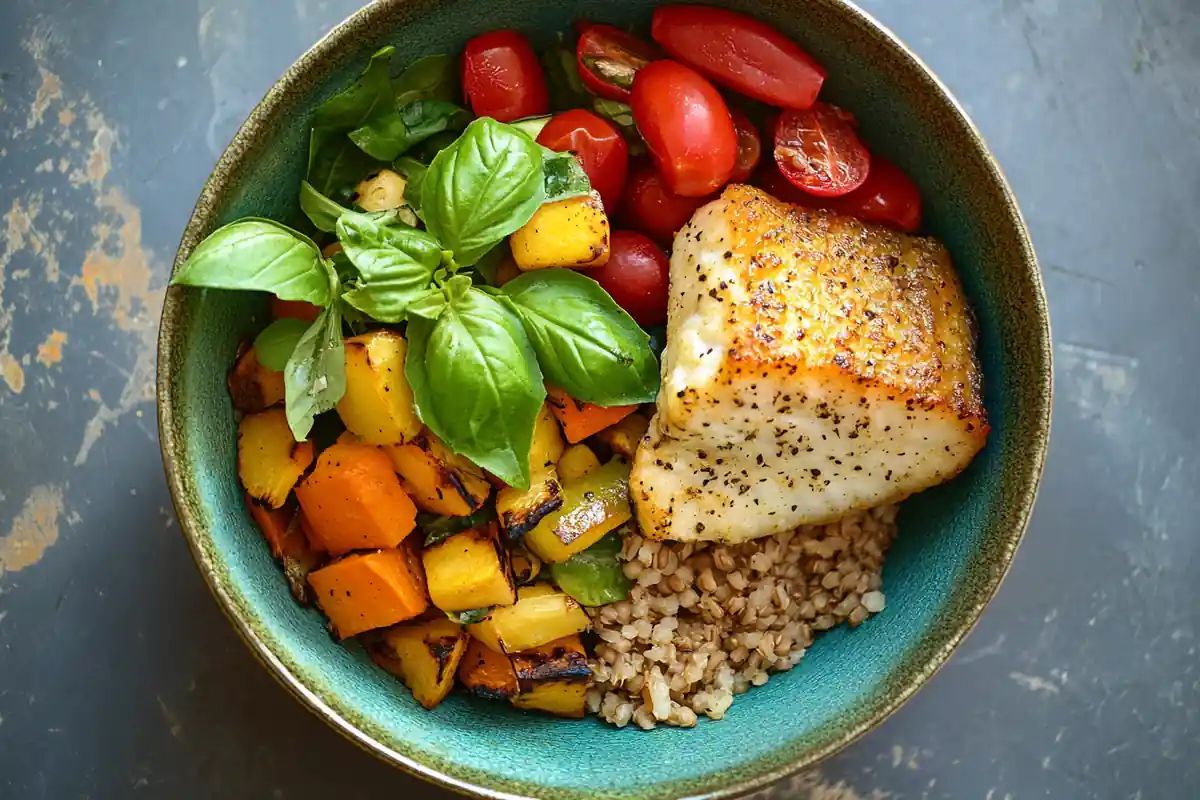What to eat on Lent? This article explains the traditional Lenten diet, focusing on food choices and observances. Learn what to eat during Lent and how to observe this religious practice.
Understanding What to Eat on Lent
What to eat on Lent is a question many people ask each year. Lent is a period of reflection and fasting for many Christians. It starts on Ash Wednesday and continues until Easter Sunday. Therefore, understanding what to eat during Lent helps to honor this tradition. Traditionally, the Lenten diet involves avoiding certain foods. Furthermore, it encourages simple meals. The aim is to focus on spiritual growth instead of indulgent eating. So, what to eat on Lent becomes a guide for this period.
The Basics of the Lenten Diet: What to Eat on Lent
The Lenten diet traditionally involves limiting meat. For many, this means avoiding red meat and poultry. However, fish and seafood are commonly eaten. Also, many people choose to give up other foods or habits. This is part of the Lenten sacrifice. Thus, the Lenten diet is a personal choice. In addition, it reflects the idea of simplicity. Therefore, what to eat on Lent centers on these basic principles.
Avoiding Meat on Fridays
One of the most common rules during Lent is avoiding meat on Fridays. Many Christians observe this tradition. What to eat on Lent on Fridays, therefore, commonly includes fish. This practice goes back to early church traditions. It is a way to remember the sacrifice of Jesus. Therefore, choosing fish over meat on Fridays is an important part of Lent.
Common Foods During Lent
What to eat on Lent often includes plant-based meals. Vegetables are a great choice during Lent. They are easy to prepare. In addition, they are often very nutritious. Furthermore, they help in creating satisfying meals. Beans and lentils are also popular options. Moreover, these foods are protein-rich. Likewise, fruits and grains are part of a balanced Lenten diet. Therefore, it’s all about simplicity and thoughtfulness.
Practical Meal Ideas for Lent: What to Eat on a Lenten Diet

Planning what to eat on Lent can be easy with the right ideas. Simple meals are a good starting point. Fish tacos, for example, are a good Friday option. Additionally, vegetable soups or stews are satisfying. Furthermore, pasta with vegetables is quick and easy. These suggestions help show how flexible what to eat on Lent can be. Lentil soups or black bean burgers are likewise great choices for protein.
For more ideas on incorporating beans into your meals, visit Calico Beans Recipe.
Quick and Easy Lunch Options
Finding quick lunch options is important for busy days. Salads with beans or tuna are a good source of protein. Hard-boiled eggs are another easy and fast option for lunch. Moreover, crackers with cheese or avocado are satisfying. Therefore, finding simple lunch choices makes Lent more manageable.
Dinner Ideas for Lenten Observance
What to eat on Lent for dinner should still be simple and filling. Baked fish with roasted vegetables is nutritious. Moreover, pasta with a tomato sauce and vegetables is a good choice. Likewise, vegetarian chili or stuffed peppers can be filling. Therefore, the goal is to keep dinners simple.
Additionally, explore What Is Naturally Fried Corn Made Of for a unique side dish idea to pair with your meals.
The Importance of Reflection and Choosing What to Eat on Lent
Lent is not just about limiting food. It is also about reflecting on spiritual growth. Fasting from certain foods can help with this. In addition, many people choose to avoid other habits. This makes room for prayer and meditation. Accordingly, what to eat on Lent can play a small part in this reflection.
Lenten Sacrifice Beyond Food
Lenten sacrifice is a big part of Lent. It encourages people to give up something they like. This can include watching TV or using social media. Additionally, many people choose to perform acts of kindness. Therefore, the focus is on spiritual well-being. Thus, what to eat on Lent can be part of a bigger spiritual practice.
The Goal of a Simpler Diet
Limiting certain foods during Lent has a purpose. It helps individuals focus on what is truly important. Furthermore, it can help with self-control. Likewise, a simpler diet can be a good reminder of gratitude. Indeed, choosing what to eat on Lent becomes a conscious choice.
Incorporating Fish and Seafood into Your Lenten Meals: What to Eat on Lent

Fish is a good choice when considering what to eat on Lent. Salmon, for example, is rich in nutrients. Likewise, tuna and cod are great choices. Moreover, shrimp and other seafood are allowed on the Lenten diet. These foods offer good protein options. Therefore, incorporating fish and seafood is important.
Health Benefits of Choosing Fish
Choosing fish provides several benefits. Fish is often protein-rich and has healthy fats. In addition, it’s a great source of nutrients. Fish, therefore, makes an important component of a balanced Lenten diet. It offers satisfaction and also benefits your body.
Easy Ways to Cook Fish
Cooking fish does not have to be complicated. Baking it with herbs is an easy option. Also, pan-frying fish is a quick way to prepare it. In addition, grilling fish is another simple choice. Therefore, there are plenty of ways to enjoy fish during Lent. Thus, you can easily add it to your menu.
Plant-Based Alternatives for Lent: What to Eat on a Lenten Diet
Plant-based options are also important during Lent. Beans, lentils, and tofu are excellent protein sources. Moreover, vegetables are an essential part of a healthy diet. Additionally, whole grains are great for energy. Therefore, plant-based meals are an important consideration when deciding what to eat on Lent.
If you’re looking for more protein alternatives, check out Substitute Chickpeas for White Beans.
Nutritious Options from Vegetables
Vegetables provide important nutrients and fiber. Choosing a variety of vegetables is beneficial. Leafy greens such as spinach and kale are good options. In addition, carrots and bell peppers are very nutritious. Therefore, incorporating a wide array of vegetables is key. Thus, they help in creating satisfying meals.
Incorporating Grains and Legumes
Grains and legumes are important components of a balanced Lenten diet. Brown rice, quinoa, and oats are good grain choices. Furthermore, beans, peas, and lentils are excellent sources of protein. Consequently, grains and legumes offer both energy and nutrients during Lent.
Sample Lenten Meal Plan: What to Eat on Lent
Creating a meal plan can help with what to eat on Lent. This plan can be flexible. For example, Monday can be vegetarian chili. Tuesday can be pasta with vegetables. Wednesday can be tuna salad. Thursday can be lentil soup. Friday can be baked fish. Therefore, a simple meal plan can be useful. Moreover, it makes the Lenten diet easier to follow.
Breakfast Ideas
Breakfast during Lent should be simple and filling. Oatmeal with fruit and nuts is a great way to start the day. Moreover, toast with avocado or nut butter is a satisfying option. Furthermore, smoothies with vegetables or fruit are another option. Therefore, keeping breakfast simple is a good practice during Lent.
Lunch Suggestions
Lunch should be easy to prepare. Salads with beans or tuna are good choices. In addition, soup with whole grain bread is satisfying. Also, leftovers from dinner can be a great lunch option. Therefore, choosing easy lunches helps make your Lenten diet simple.
Dinner Options
Dinner can be vegetable-based or include fish. Baked salmon with roasted vegetables is nutritious and satisfying. Likewise, vegetarian pasta dishes are good choices. Additionally, lentil stew or vegetarian tacos provide a different option. Therefore, focusing on simple dinners is important when considering what to eat on Lent.
Navigating Lent with Dietary Restrictions: What to Eat on Lent
Dietary restrictions can present additional challenges during Lent. People who are vegetarians or vegans, for example, might not feel much change. However, they may still choose to give something up for Lent. Furthermore, those with gluten intolerance or other food sensitivities need to be careful. Therefore, understanding your needs is very important. Thus, it allows for a safe Lenten diet.
Adapting Lent for Vegetarians and Vegans
Vegetarians and vegans already have a diet that excludes meat. Therefore, they may need to be creative in choosing their Lenten sacrifice. For example, they may limit processed foods or certain treats. Additionally, they may choose to spend more time on mindful eating. Thus, they can still fully participate in Lent.
Handling Allergies and Intolerances
People with allergies need to be careful when making meal plans. Moreover, those with intolerances must be equally cautious. Therefore, careful planning is crucial. For example, if you have a gluten intolerance, focus on gluten-free grains. Consequently, make sure to read labels carefully. Ultimately, this will ensure a safe Lenten diet.
Making the Most of Your Lenten Meals: What to Eat on Lent
During Lent, it is important to be mindful of not just what you eat, but also how you eat. Preparing and eating meals with intention can enhance the experience. Furthermore, being grateful for the food you have can be part of the spiritual practice. Thus, this approach enhances the experience of what to eat on Lent.
Mindful Meal Preparation
Preparing food is a simple, yet powerful practice during Lent. The effort you put into meals enhances your gratitude. Additionally, it offers a moment of peace during a busy day. Therefore, take your time when preparing your food during this period.
Eating with Intention
Eating with intention can be a good way to be mindful during Lent. Focus on each bite. Savor the flavors. Furthermore, eat without distractions. Therefore, this small act adds to the Lenten experience. Ultimately, focusing on how you eat is just as important as what you eat.
The Importance of Simplicity
Simplicity is a key part of the Lenten diet. This applies to both your meals and your daily life. Moreover, simple meals help reduce stress. Therefore, they can also bring a sense of calm. Thus, choosing simplicity supports the goal of Lent.
Exploring Different Cultural Traditions and What to Eat on Lent
Cultural traditions often influence how people observe Lent. Different regions have their own unique Lenten meals. Exploring these traditions can provide new meal ideas. Moreover, it offers a broader understanding of what to eat on Lent. Therefore, it’s a chance to learn and grow.
Regional Variations in Lenten Dishes
Regional variations in Lenten dishes show the diversity of tradition. For example, some cultures focus on particular types of fish. In addition, others might have specific vegetarian meals. Therefore, researching regional options helps in broadening your understanding of what to eat on Lent. Thus, you can find new dishes to try.
Learning from Other Cultures
Learning from other cultures can enhance your Lenten experience. It can help show that while the traditions are different, the goal remains the same. Namely, spiritual growth and reflection. Moreover, it can offer inspiration for your own Lenten diet. Therefore, this exploration enriches your understanding.
Adapting Global Recipes for Lent
You can adapt global recipes to fit your Lenten diet. For example, you could find a vegetarian curry recipe. Then, you can prepare it without meat. Additionally, you can modify a traditional fish stew. Therefore, by adapting, you can make your Lenten meals more varied. Thus, it enhances the food you are eating.
The Role of Fasting and Its Impact on What to Eat on Lent
Fasting is another important part of the Lenten observance for some individuals. It’s about more than just limiting food. It represents an act of spiritual discipline. Therefore, understanding the purpose of fasting is important during Lent. Thus, fasting adds another dimension to the practice of Lent.
Types of Fasting Practices
There are various ways to approach fasting. Some people choose to avoid all food on certain days. Moreover, some limit meals to just one or two per day. Additionally, fasting can also involve abstaining from certain types of food. Therefore, choose a practice that suits your needs.
The Spiritual Purpose of Fasting
Fasting’s main goal is to enhance spiritual reflection. The physical fast helps many to focus on their spiritual needs. It also encourages a sense of self-control. Therefore, fasting connects the physical act to the spiritual. Thus, it is an integral part of the Lenten practice.
Combining Fasting and Dietary Changes
Combining fasting with dietary changes can deepen your Lenten experience. Fasting might mean avoiding food on particular days. Then, dietary changes mean focusing on simple, intentional meals. Therefore, the combination supports the spiritual goals of Lent. Thus, both practices work together.
Maintaining Balance and Nutrition While Observing a Lenten Diet
While Lent encourages simplicity, it’s still important to maintain a balanced diet. You should ensure you get enough protein, nutrients, and fiber. Therefore, careful planning is required to ensure a nutritious Lenten diet. Thus, you can support your health while observing Lent.
Ensuring Adequate Protein Intake
Protein is essential for good health. Therefore, finding protein sources during Lent is very important. Beans, lentils, tofu, and fish are good options. Moreover, eggs and dairy can also be useful. Therefore, be mindful of your protein intake throughout Lent. Thus, you can maintain your body’s needs.
Getting Enough Fiber
Fiber is important for digestion. Therefore, you should focus on fiber-rich foods during Lent. Vegetables, fruits, whole grains, and legumes provide fiber. Additionally, you can increase your fiber intake gradually. Thus, it ensures better overall health.
Importance of Staying Hydrated
Staying hydrated is important all the time, including during Lent. Drink plenty of water throughout the day. Moreover, you can also drink herbal teas. Therefore, make sure you stay hydrated during the Lenten season. Thus, it’s an important part of maintaining health.
Frequently Asked Questions (FAQs) About What to Eat on Lent
What are you supposed to eat during Lent?
During Lent, people often limit meat, especially on Fridays, and choose fish, plant-based meals, and other simple foods. Vegetables, grains, beans, and legumes are common choices. Therefore, what you eat during Lent is focused on simplicity.
What foods were forbidden during Lent?
Traditionally, red meat and poultry were forbidden during Lent. Therefore, people chose fish and seafood. In addition, many people also limited other foods as a personal sacrifice. Accordingly, the forbidden foods during Lent have varied.
What is the traditional Lent diet?
The traditional Lent diet is simple. It involves eating fish and seafood. In addition, it includes plant-based meals. Therefore, the traditional Lent diet prioritizes simple options and limiting certain foods.
What are the rules for Lent?
The rules for Lent often include avoiding meat on Fridays. Also, people choose to give up something they enjoy. The goal is spiritual reflection and limiting indulgences. Thus, the rules for Lent are about simplicity and sacrifice.

